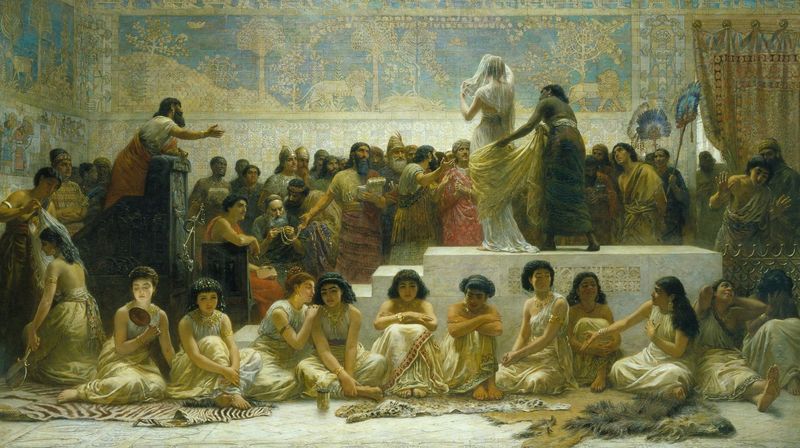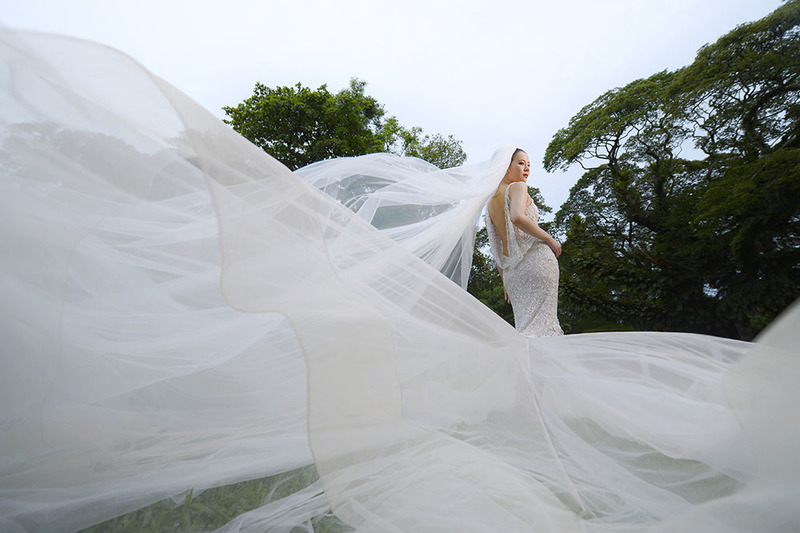AMERICAN WEDDINGS BLOG
Stay up to date with the latest wedding ceremony trends, script writing inspiration, tips and advice for first-time officiants, and news that matters to couples and wedding ministers.
Stay up to date with the latest wedding ceremony trends, script writing inspiration, tips and advice for first-time officiants, and news that matters to couples and wedding ministers.
Published Thursday, Aug. 5th, 2021
Last updated Friday, Nov. 22nd, 2024

Let’s face it, marriage hasn’t always been about an equal partnership. For a long time, it was more of a transactional, sexist, heteronormative, patriarchal business deal… with the wedding customs to match. (Definitely not our kind of party!)
Luckily, times have changed, and wedding customs are changing along with them. Modern wedding customs offer humor and creativity, a break from outdated gender roles, and embrace same-sex and LGBTQ+ marriage.
(THIS is a big part of why we do what we do! By ordaining friends and family members and offering free resources online, we help couples create the modern weddings they truly deserve.)
With that in mind:
This custom started thousands of years ago, so it’s actually kind of strange that it’s still around today. In marriage’s earliest days, when it was a contract between families and women were considered property, the patriarch of one household (a father, uncle, or older brother) would give a girl in his care to another man to marry. This new husband would take over the responsibilities of housing the girl, as long as she provided children and met his needs as the head of the household.

Today, 'giving away the bride' means something much sweeter!
These days, ‘giving away’ a bride isn’t literal, thank goodness! Some fathers still walk their daughters down the aisle and symbolically hand them over when a minister says, “Who gives this woman in marriage?” (We call that the ‘end of aisle’ question.) But it’s commonly understood to be a show of support and love for the woman’s decision, and not an actual exchange of ownership. Still… for many brides and their fathers, the implication is too icky to embrace.
A modern alternative:
We’ve got several! Couples walking hand in hand down the aisle together, walking down the aisle alone, walking with a pet, or walking with an entire posse of your nearest and dearest. Mothers, mentors, siblings, and friends also frequently walk people down the aisle to ‘give’ them away.
A dowry is money, property, or goods given by a bride’s family to a husband on their marriage day, as part of the agreement to marry. In ancient times, dowries served two related purposes: One, to move female children out of the home quickly so that there were fewer mouths to feed. Two, to give daughters their best chance of having a good life.
Offering prospective suitors a ‘dowry’ to sweeten the deal made marriages happen faster. And the bigger the dowry, the better the suitor. This usually meant someone more accomplished, wealthier, or more attractive, and thus, more likely to provide a comfortable life for their new bride. Still, girls had no say in the whole thing, and dowries often felt like a bribe.

Livestock and land were common dowries.
In the U.S., this custom is kept alive in the expectation that a bride’s family should pay for the entire wedding… which is patriarchal and heteronormative, so it sucks twice. (Also, dowries are still a part of modern marriages in many cultures -- though their meaning has evolved to become somewhat less patriarchal over time.)
A modern alternative:
Don’t feel pressured into an elaborate wedding that requires any family member to overspend, and always share wedding costs in an equitable (and voluntary) way. Or, just elope! Save your money for a cool honeymoon or post-wedding purchase.
Ancient Babylonian villages held yearly open air markets in order to sell young girls into marriage. According to the writings of the Greek historian Herodotus, the most desirable girls were presented first, and sold to the highest bidders, so that ‘brides’ became less expensive as the auction continued. If the girls were deemed ‘ugly’ or were too disabled to earn a bid, the auctioneers paid men to take them away at the end of the day, using money they’d made from earlier sales.

The Babylonian Marriage Market, painting by Edwin Long, 1875
Babylon, founded around 2300 B.C., was the capital city of Babylonia in Mesopotamia
A modern alternative:
This one's so truly horrific, that even online dating seems better in comparison. We joke, because honestly, this bit of history is too hard to stomach otherwise. Let’s give a shout out to progress: rights for children, women, and disabled people; feminism; bans on child marriage; and outlawing forced marriage.
Men in ancient Rome would ceremoniously drag or forcefully carry their new brides into their homes following the wedding ceremony. According to Roman mythology, the custom was adopted by Roman men after returning home from a period of mass abduction and rape of the women in neighboring towns (and event referred to by historians as The Rape of the Sabine Women).
Sometimes the entire town ‘helped’ to carry the struggling bride to her new home. Often, brides fought back because they were truly reluctant to marry, but they were also expected to act out this struggle as a sign of their purity and resistance to losing their virginity. (Eww.)

Sabinae raptae, ‘Rape of the Sabines,’
sculpture by Giambologna (Johannes of Boulogne), 1583
We’ve managed to turn this custom into something cute and romantic, and husbands and wives even take turns carrying each other (or riding piggyback) through doorways while they laugh together. But for some, the gesture just won’t work.
A modern alternative:
Hold hands and walk in and out of rooms together as equals. Or maybe find some fit friends to carry you both at the same time?
Ever wonder 'why do brides wear wedding veils'? Back when most marriages were arranged between families, brides and grooms didn’t meet before the wedding day, and arrived at the ceremony as strangers. This is where veils came into play, and they served two purposes. One, the bride’s parents were afraid men would refuse to marry their daughters if they got a good look at them first. Two, covering a woman from head to toe (in a veil and a dress) symbolized that she was a pure package, virgin and untouched.
Once the couple was married and the groom couldn’t back out, he’d lift the veil to finally see what his virgin bride looked like.

The right veil can make a stunning impression.
These days, veils are usually just considered an exquisite accessory that adds to the overall beauty of a wedding gown. Sometimes veils and white gowns still signal purity, but this expectation / interpretation is usually limited to traditional Christian weddings.
A modern alternative:
Choose a colorful veil, while still indulging in cascading chiffon or lace. Or lose the veil altogether, and try a tiara, crown, decorative headpiece, high-fashion wedding hat, or floral wreath!
Become a Wedding Officiant with Our Free Online Ordination!